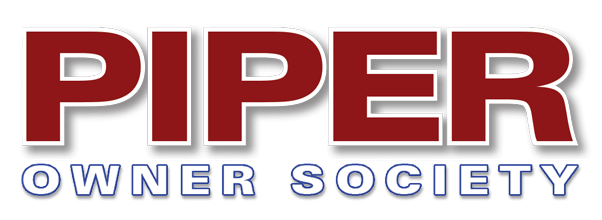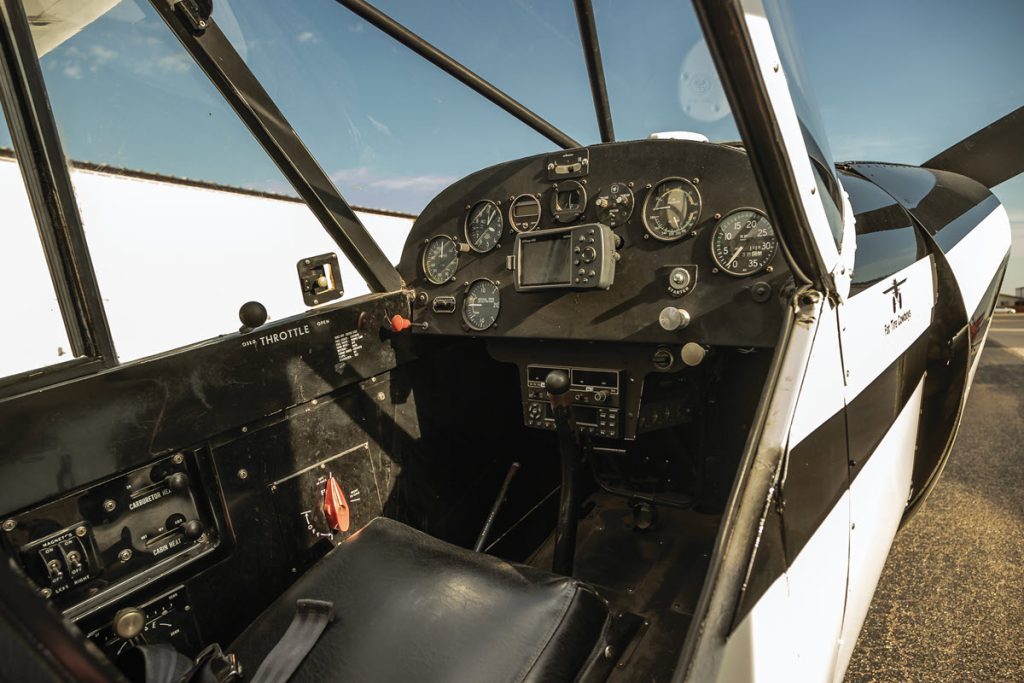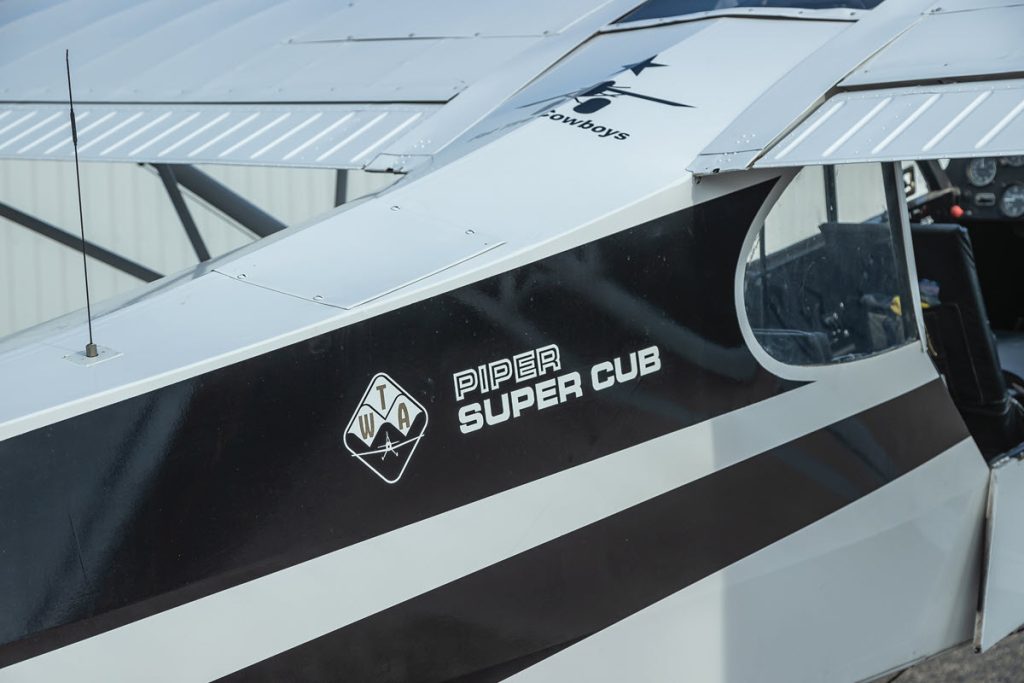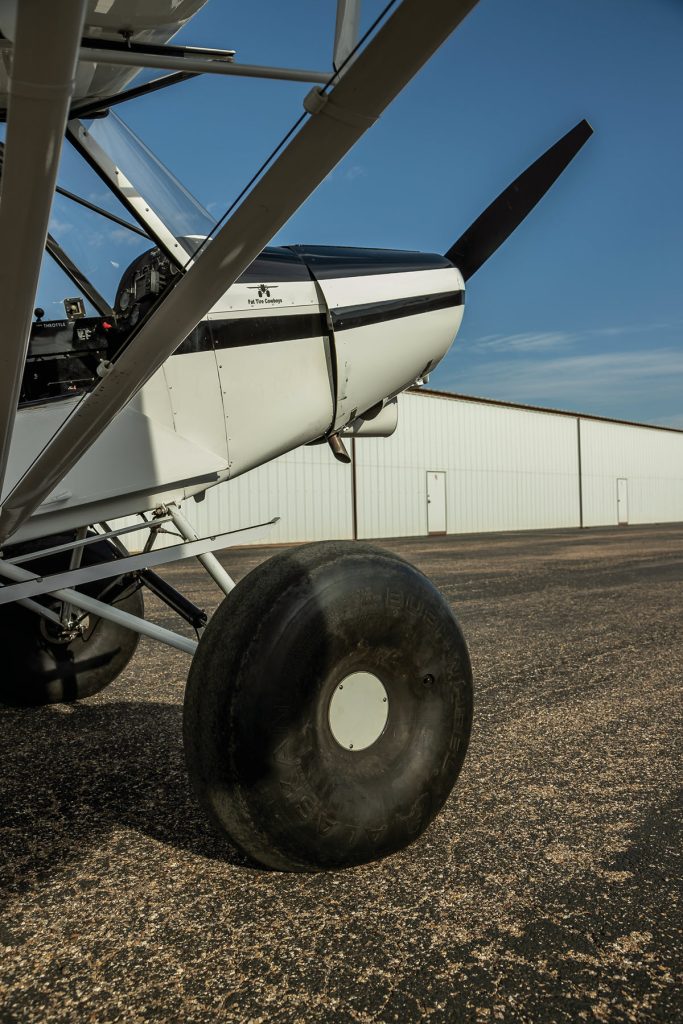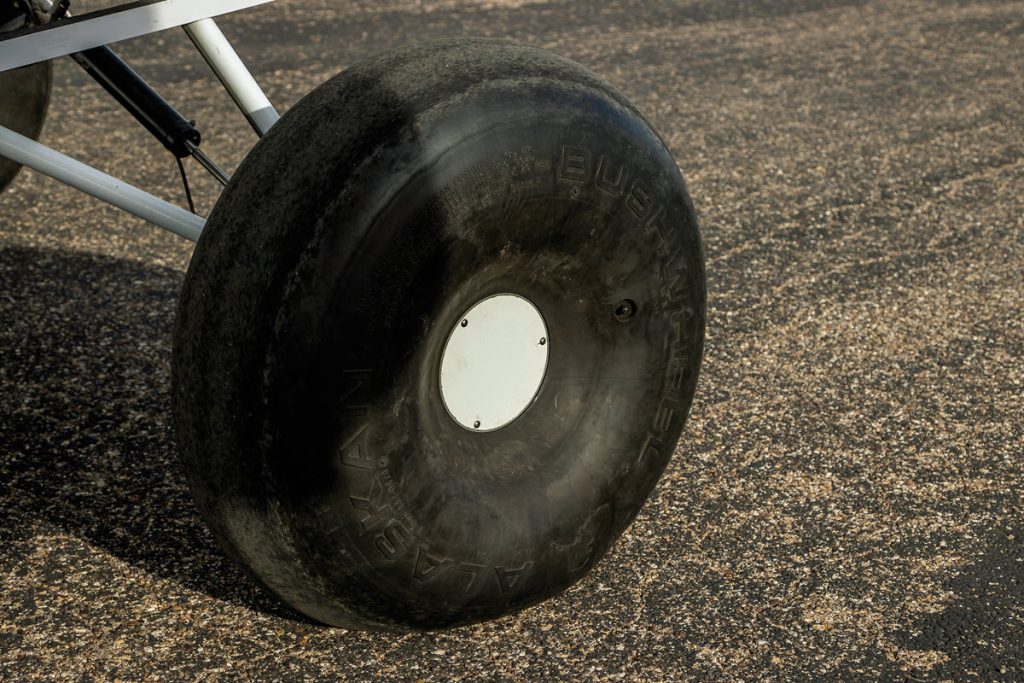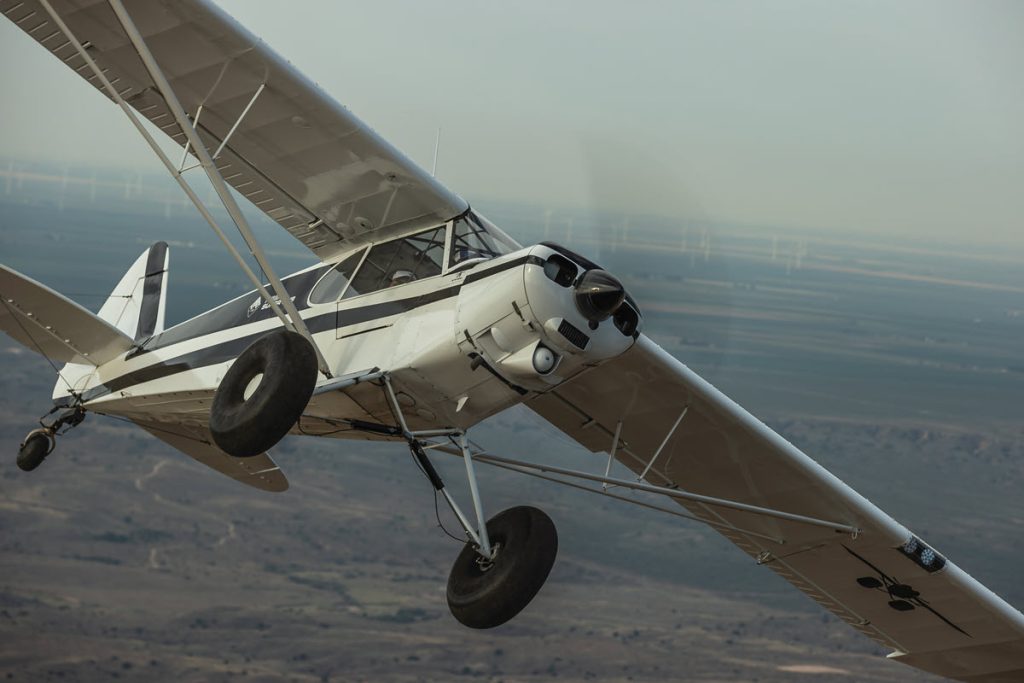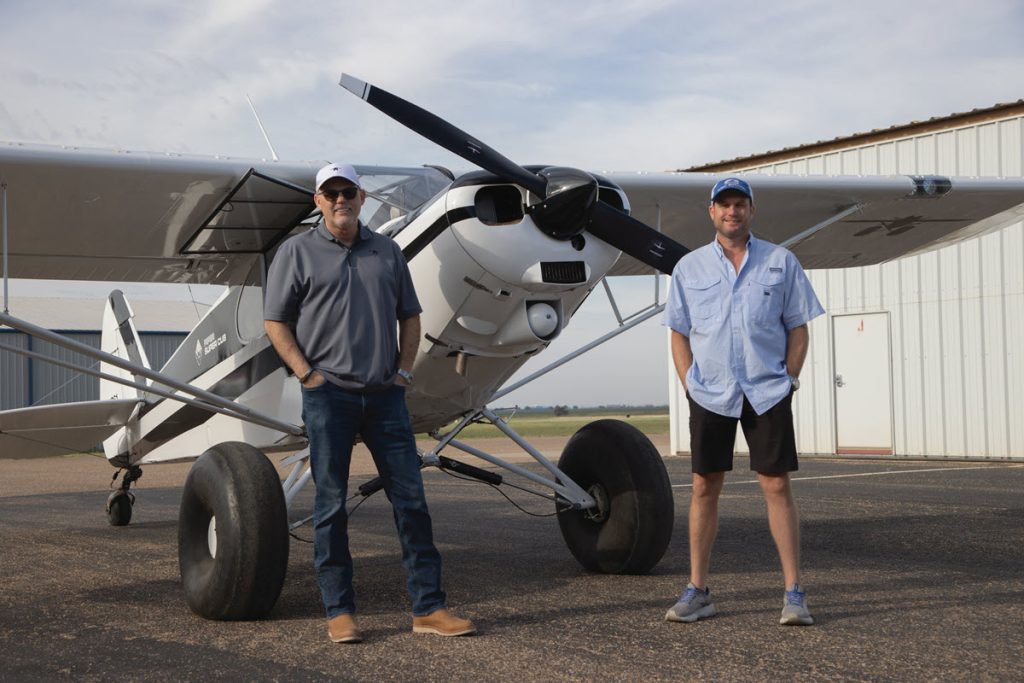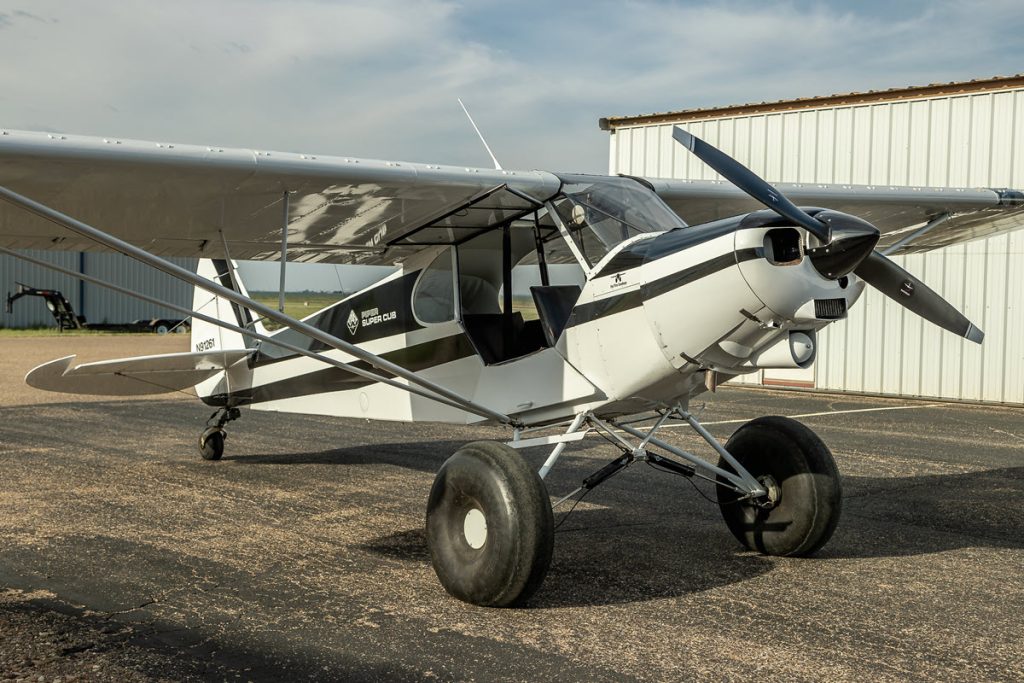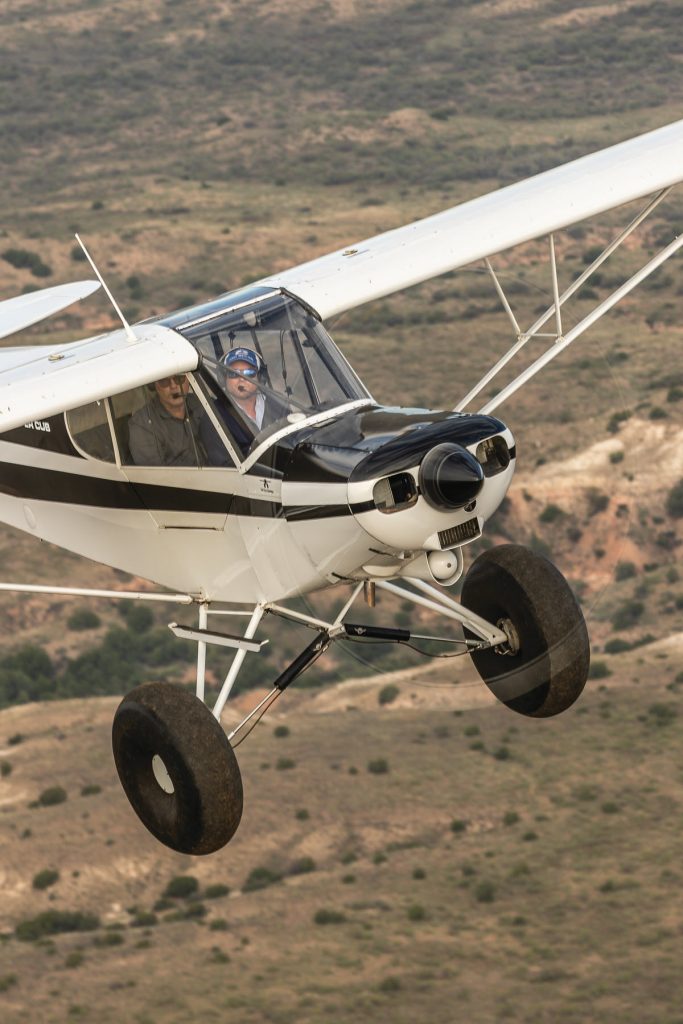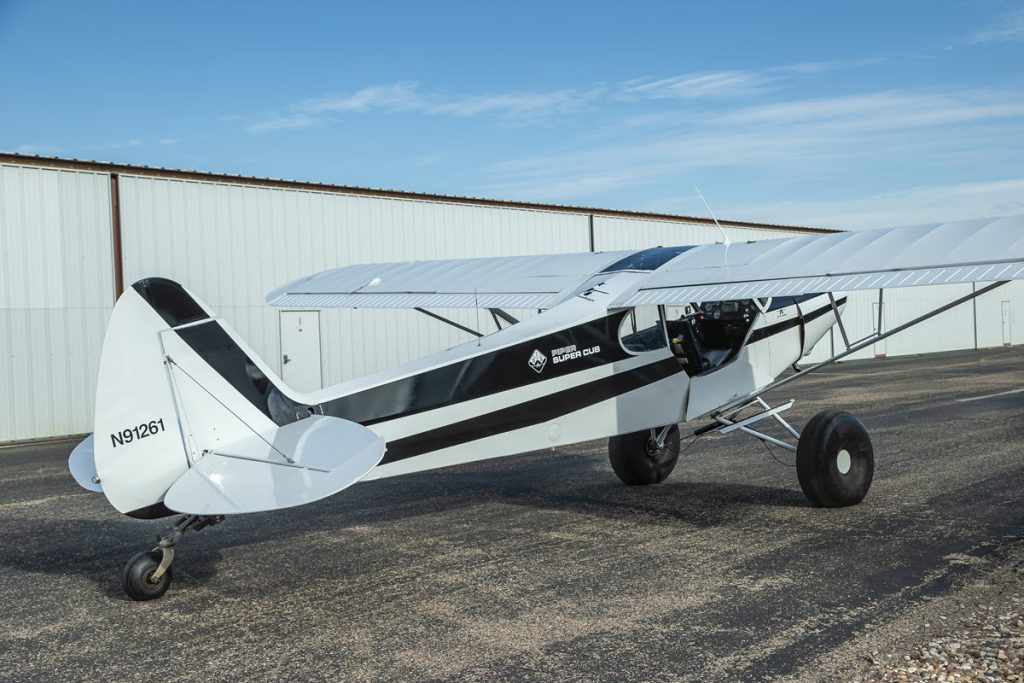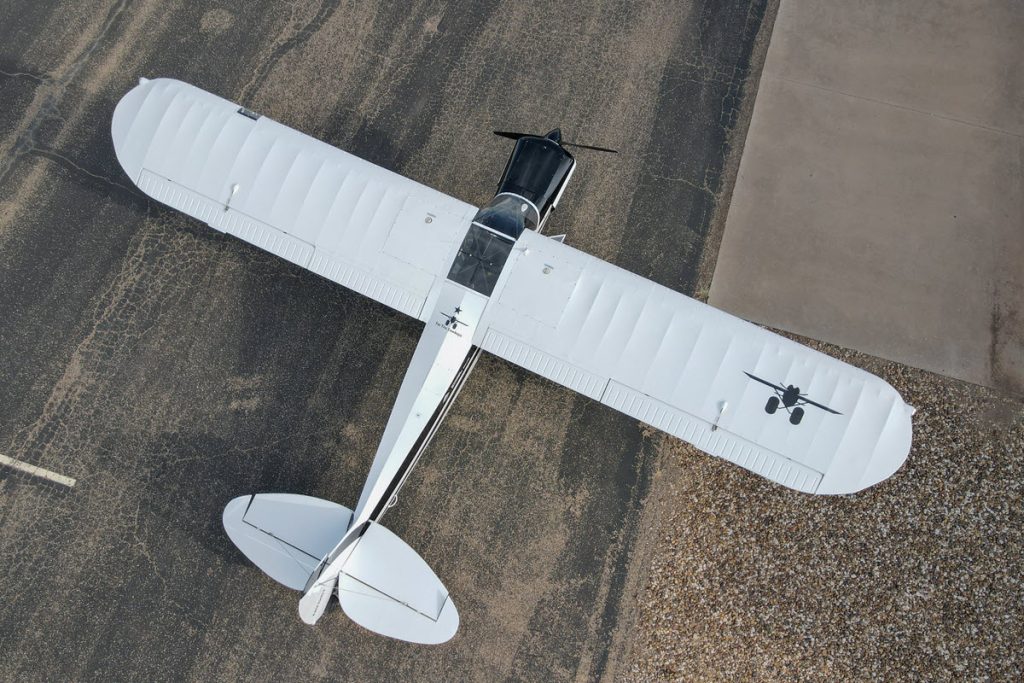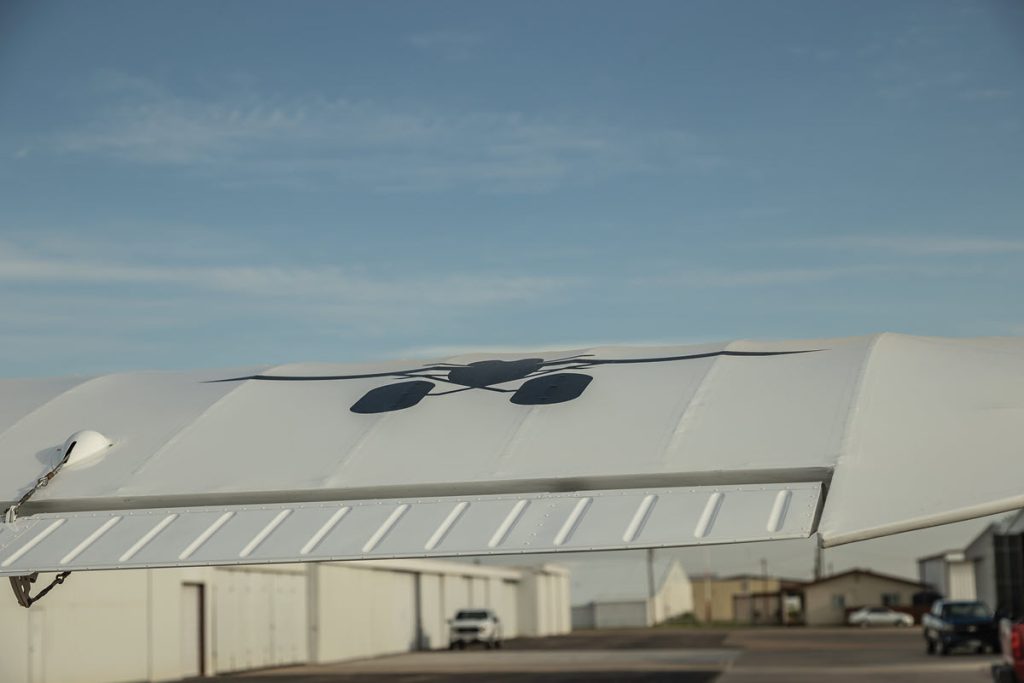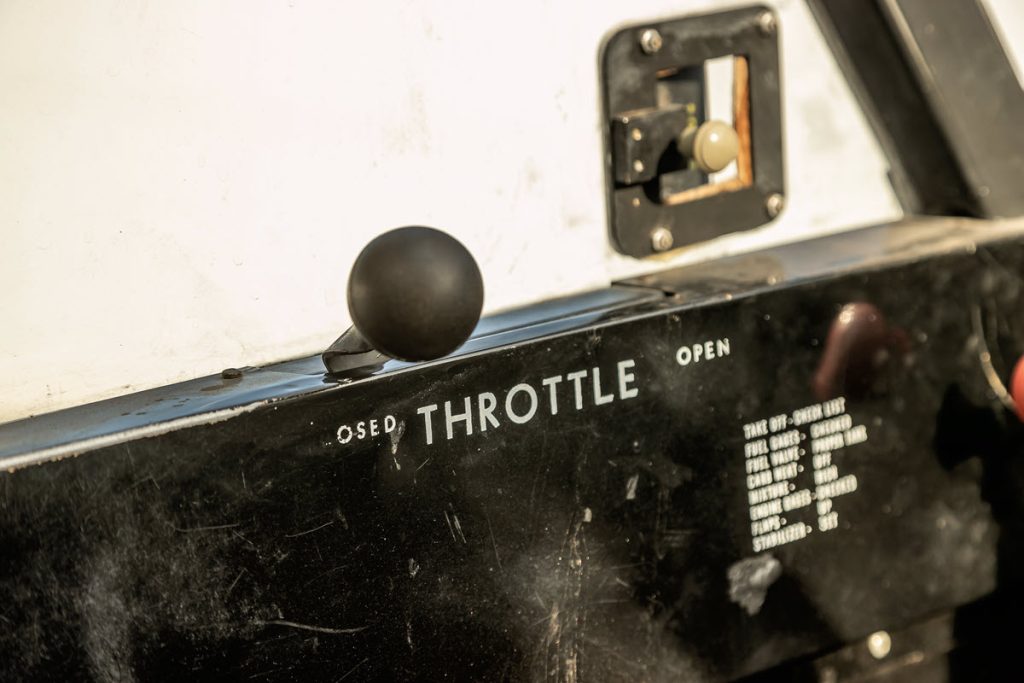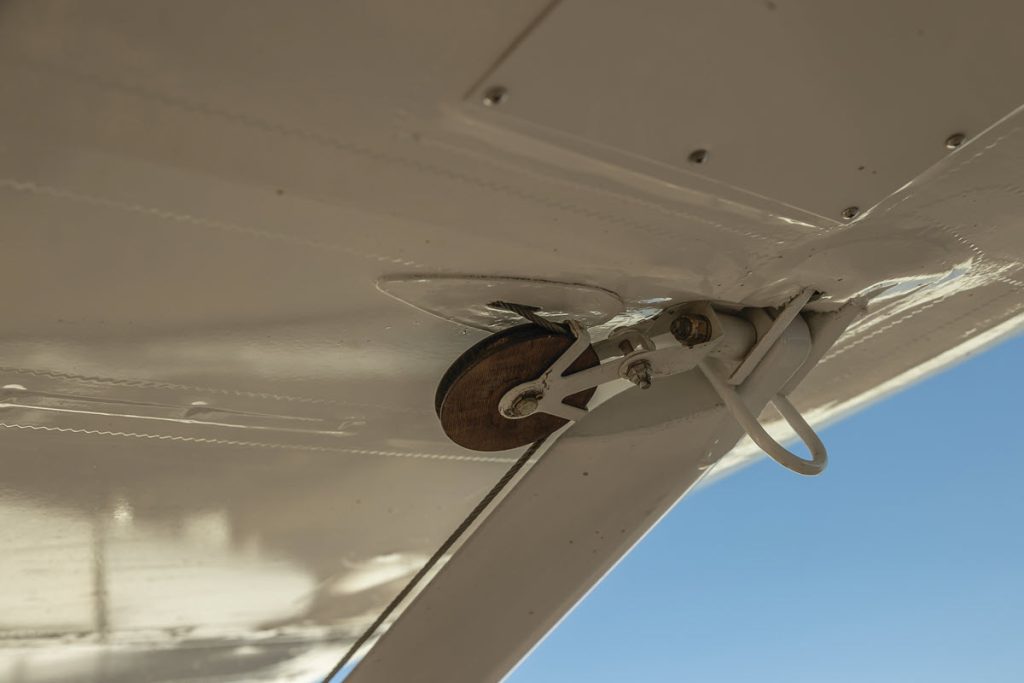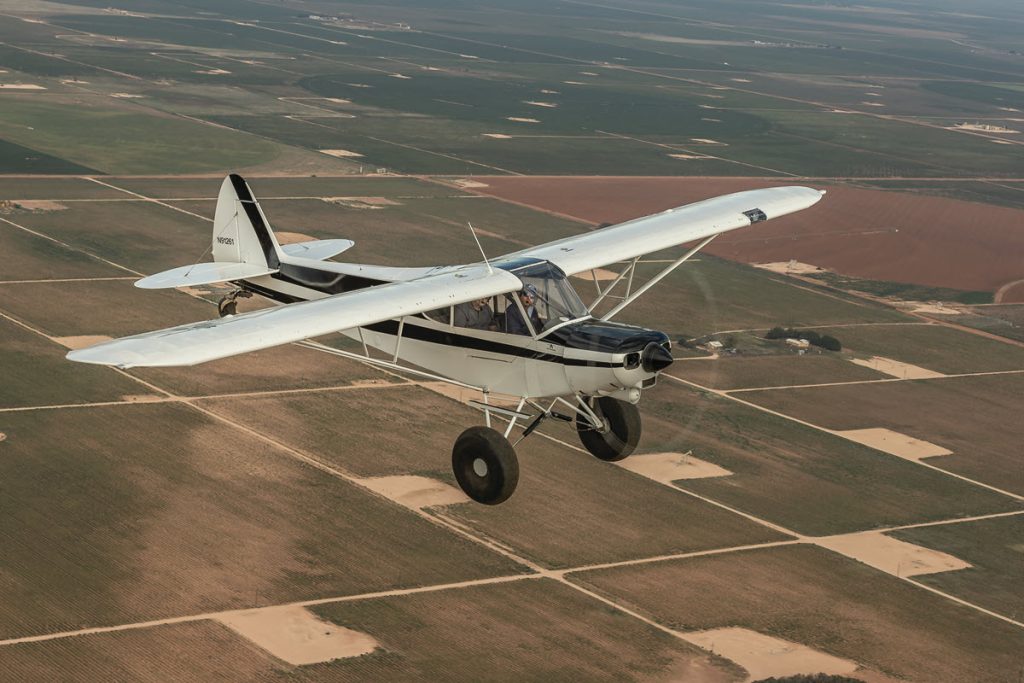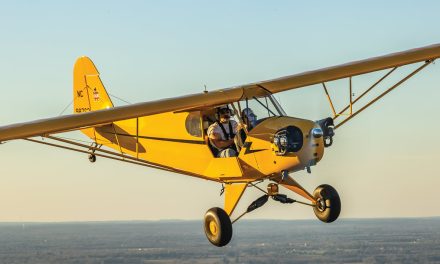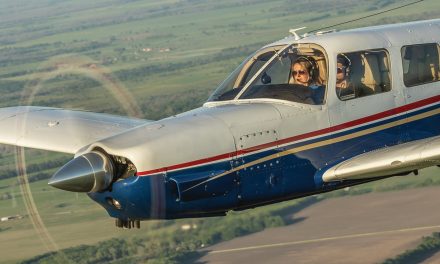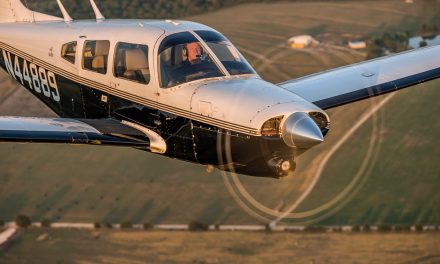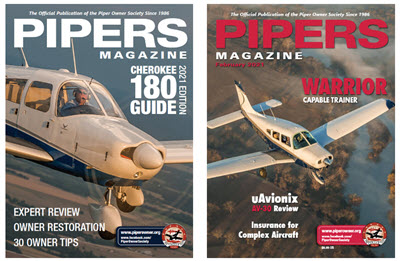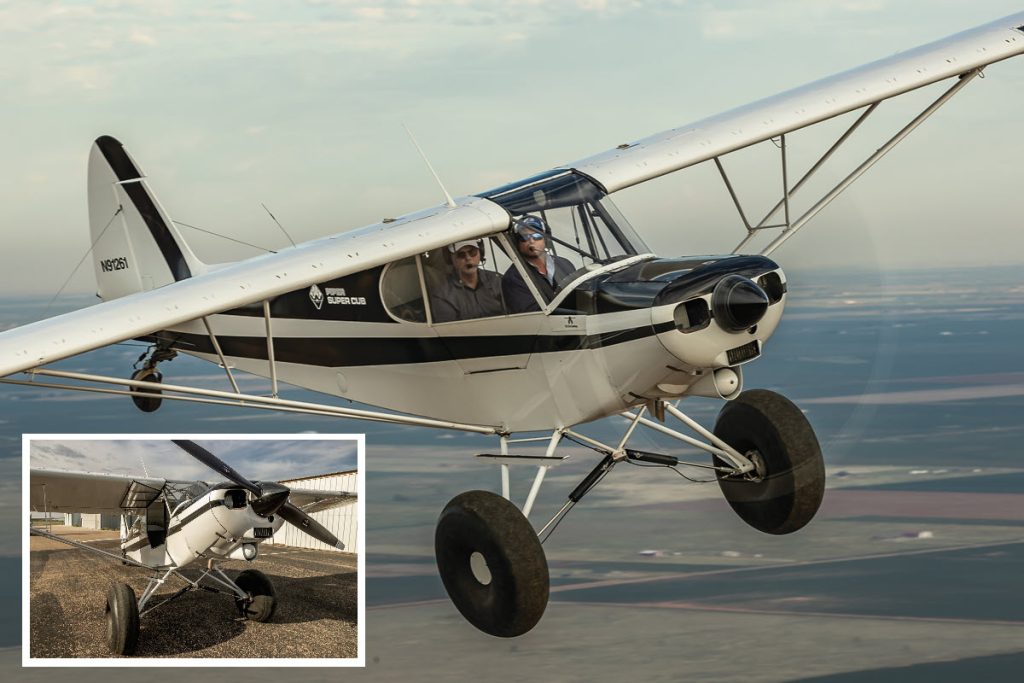
By Michelle Adserias
When Kurtis Thomas is getting ready for longer trips, he packs up his Beechcraft Baron. But when its time for some good old-fashioned fun, his 1983 Piper Super Cub is his go-to aircraft. As Kurtis put it, “It’s not a fast plane but it’s ideal for getting in and out of tight spaces and can haul a respectable load.”
Flying and fun have gone hand and hand for Kurtis since he took his first flight when he was four years old. When he learned his family was flying to San Francisco, the only thing he really understood – or cared about – was the fact he was going to fly for the first time. The flight did not disappoint.
Kurtis became adept at flying RC (radio-controlled) aircraft. Then, a family friend gave him the opportunity to handle the controls of a full-sized plane, with supervision, of course. He even landed the airplane once. His parents understood his fascination with flight. For his 17th birthday, they gave Kurtis permission to take flying lessons – but not the money for those lessons. He was on his own financially.
Fortunately, the flight school, Texas Air Center in Lubbock, Texas was running a special on lessons. Students who paid $1200 up front were guaranteed all the lessons they needed to get their PPL. Fortunately, Kurtis finished with $300 still credited to his account. He got his ticket, as he calls it, in 1988 when he was 18 years old.
A few years later, Kurtis was surprised when his father approached him about jointly purchasing a 1970 Piper Cherokee Six. The family owned (and still owns) a large cotton production business, TKT Farms in West Texas, and the Cherokee Six would make a solid family vehicle, not only because of the number of seats but because of its load capacity, and horsepower. It wasn’t long before his father was also a certified pilot.
N91261
The Cherokee wasn’t the only Piper in the family. Kurtis’ uncle purchased a factory-new PA-18 Piper Super Cub in 1983. Piper had just decided to end production of this aircraft when Larry Neal, the owner of Neal Aircraft in Lubbock, made an unusual inquiry. As a Piper dealer, he understood his customers and the appeal of the Super Cub so he asked Piper how many he would have to order for them to do one last manufacturing run. The magic number was 50. So, Mr. Neal ordered 50 Piper Cubs. They were all sold before the first one was delivered. N91261 is number 39 in that final production of Cubs.
Kurtis’ uncle, now in his mid-90s, is a perfectionist. When he sold Kurtis the airplane in 2007, it was well-maintained mechanically and the interior was pristine. Although nothing needed to be repaired or updated at that time, several members of the Fat Tire Cowboys were competing in STOL events. So, Kurtis altered N91261 to make it more competitive. “I tricked it out with every modification I could find that would make it slower,” Kurtis said. “I upped the horsepower, I put vortex generators on it, put the really trick suspension on it, added 31″ Alaska Tundra Tires and a borer prop – just everything to make it fly slower.”
The fabric skin on the Super Cub was showing some typical wear which needed to be addressed. In 2017, an “incident” involving some unexpected, rough terrain in a river bed provided Kurtis the impetus he needed to tackle the problem. He decided to recover the plane. He spent every waking moment, not devoted to planting and harvesting cotton, to replacing the Super Cub’s fabric. He worked on it 10-12 hours most days, seven days a week. Fourteen months later, it was finished with a fresh paint job. It now looks as pristine as the day it rolled off the factory floor.
Because the Piper Super Cub has a cult following, it is still well-supported so parts are quite easy to come by. Kurtis most often turns to Univair in Colorado for parts. They were very adept at supplying what he needed for his rebuild.
The only potential upgrade down the road would be a flat panel screen and auto-pilot, though it doesn’t sound like Kurtis is very committed to making those changes. “I don’t need it because I don’t travel in it [The Super Cub]. Hand-flying is kinda what it’s all about. That’s the joy of that airplane!”
Making Memories
Although Kurtis doesn’t spend as much time as he used to in his Piper Super Cub, about 15-20 hours a year, he makes the most of them. He and the other members of the famed Fat Tire Cowboys enjoy flying low over lakes when their water levels are down, taking off from and landing on the land masses that emerge for a short season.
One of Kurtis’ favorite places to fly is at the Caprock Escarpment near Lubbock. The escarpment drops about 1000 feet from the high plains of the Llano Estacado to the rolling terrain below, with its rivers and valleys and sandbars. The scenery is spectacular and playing in the riverbeds has a rare appeal.
But his favorite memories are from the flights he’s taken with Air Force ROTC cadets from Texas Tech University. A number of years ago, Kurtis developed tight friendships with two full-bird colonels and former flight instructors who had retired to the area. They donated their time and aircraft to take the students, one by one, on their introductory flights with “some pretty wild flying.”
Though his friends have since passed away, Kurtis continues the tradition. He gives each student a chance to take the stick. Some take to it immediately. They have a natural feel for flying, an innate ability they weren’t even aware they had. Flying with these youngsters has made some of the best moments.
With about 40 years of flying under his belt, Kurtis has learned a few important things. He only flies the Super Cub VFR during the day. Flying it at night just isn’t worth the risk. Over the years, he’s had three engine failures. When flying single-engine aircraft, that scenario doesn’t leave the pilot many options – except to find a safe place to land. Flying safe is crucial.
When asked what else he’d like to tell our readers, Kurtis replied, “Don’t ever sell yourself short by telling yourself something is too expensive. Whenever you look at life that way, then everything becomes too expensive and you don’t get the opportunity to explore your dreams. So, be aggressive when you can. Live your life to the fullest and aviation will certainly take care of it.”
1983 Piper Super Cub (PA-18-150) Specifications & Performance
| Engine Mfg | Lycoming |
| Engine | O-320 |
| Horsepower, each | 150 |
| Displacement, cu. in. | 319.8 |
| No. Cylinders | 4 |
| TBO | 2000 |
| Min. Octane Fuel | 80 |
| Propeller Mfg | Sensenich |
| Prop Specs | 74-DM-56 |
| Prop Blades | 1 – F/P |
| Prop Diameter | 74″ |
| Landing Gear | Fix/Conv |
| Mains | 8.00×4 |
| Tailwheel | 6″ |
| Gross Wt. | 1,750 lbs |
| Avg Empty Wt. | 998 lbs |
| Avg Useful Load | 752 lbs |
| Baggage Capacity | 50 lbs. |
| Total Fuel, Std, gals | 36 |
| Wingspan | 35′ 3″ |
| Length | 22′ 5″ |
| Height | 6′ 7″ |
| Main Gear Track | 6′ .5″ |
| Wing Area | 178.5 |
| Wing Loading | 10 |
| Power Loading | 11.6 |
| Pass. Doors | 1 |
| Bag/Cargo Doors | 0 |
| Seats, Standard | 2 |
| Seats, Optional | 0 |
| PERFORMANCE | |
| Top Speed | 130 mph |
| Cruise Information | |
| Optimum @ | 7,000 ft |
| Speed | 115 mph |
| Range | 460 sm |
| Endurance | 4 hrs |
| Economy @ | 10,000 ft |
| Speed | 100 mph |
| Range | 700 sm |
| Endurance | 7 hrs |
| Stall, Clean | 47 mph |
| Stall, Flaps | 43 mph |
| Take-off Roll | 200 ft |
| Take-off, 50 ft | 500 |
| Climb, Best Rate | 960 fpm |
| Speed, Best ROC | 75 mph |
| Speed, Best Angle | 45 mph |
| Approach Speed, Clean | 70 mph |
| Approach Speed, Flaps | 65 mph |
| Landing Roll | 350 ft |
| Service Ceiling | 19,000 ft |
